Hello, and welcome to another Tinto Talks, the happy Wednesdays where we talk about Europa Universalis V!
Today we will talk about two situations that impact Italy in the first 200 years of the game: the Guelphs & Ghibellines and The Italian Wars. They’re kind of related, but independent in how they play. Let’s start without further ado:
Some of you may remember the ‘Shadow Empire’ incident of EU4, where the Emperor ‘races’ to keep the Italian countries inside the HRE. However, one century earlier, the political landscape of Italy was more complex in that regard, as two main political factions had been fighting for around 200 years: the Guelphs, defenders of the Pope, and the Ghibellines, supporters of the Imperial power.
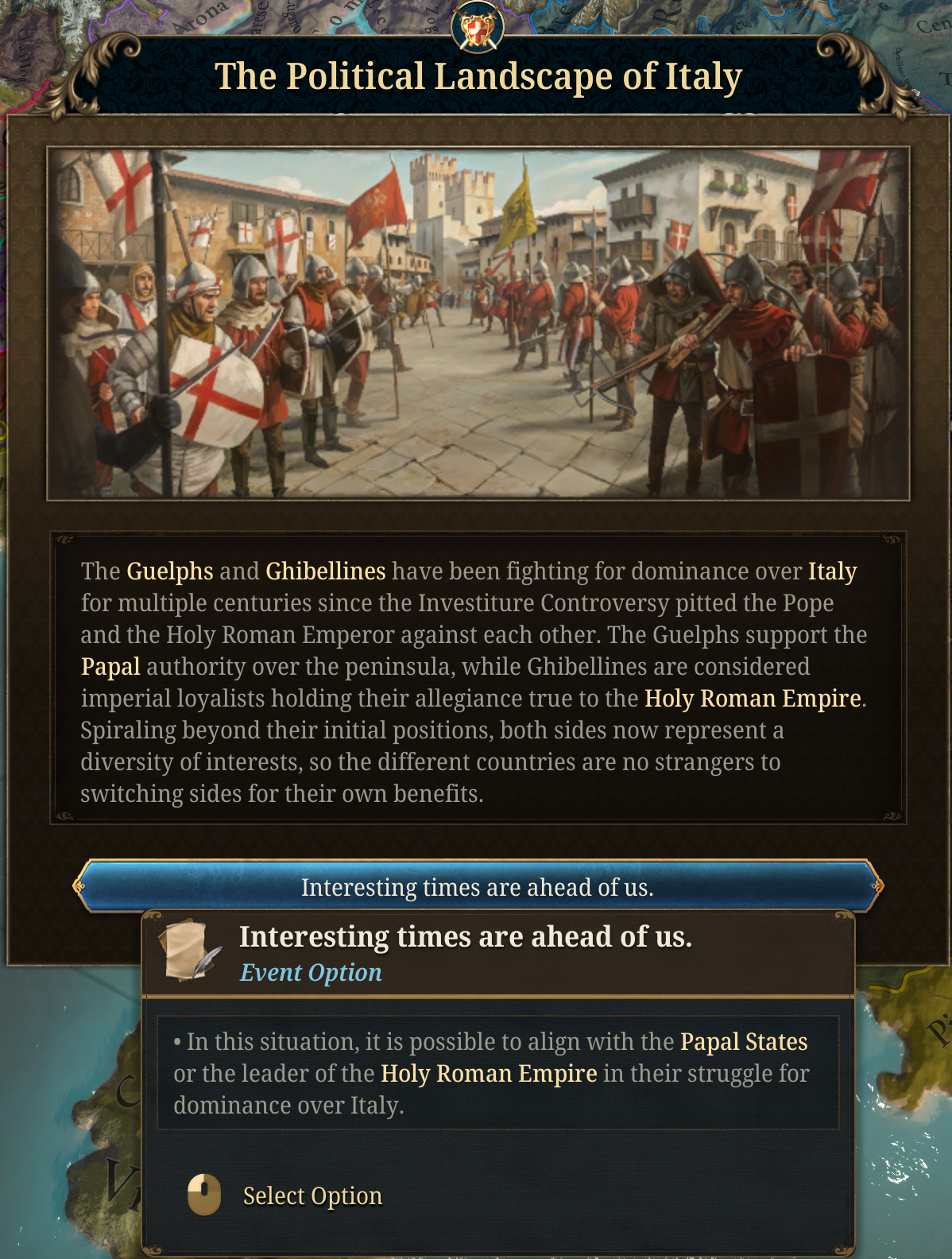
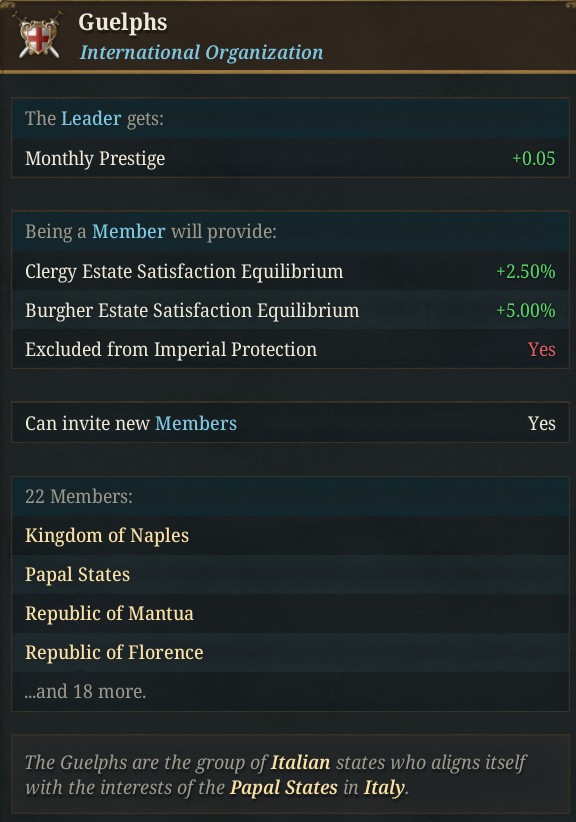
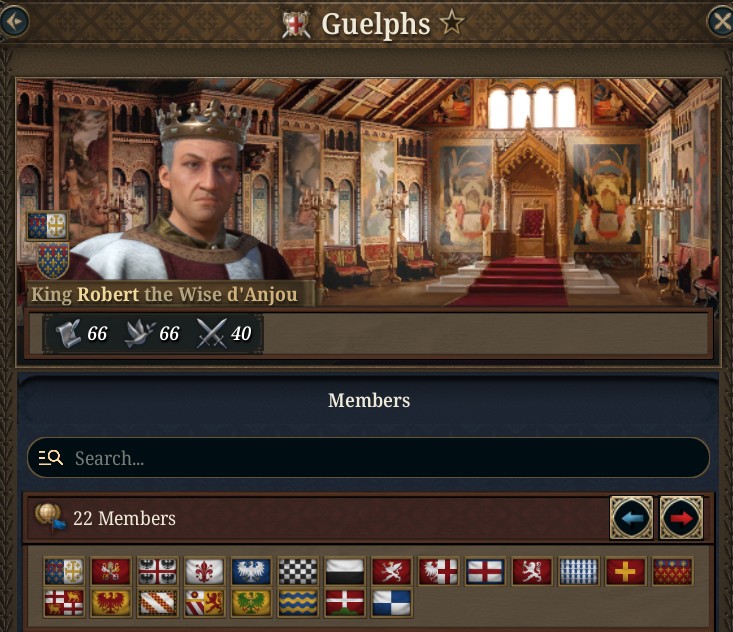
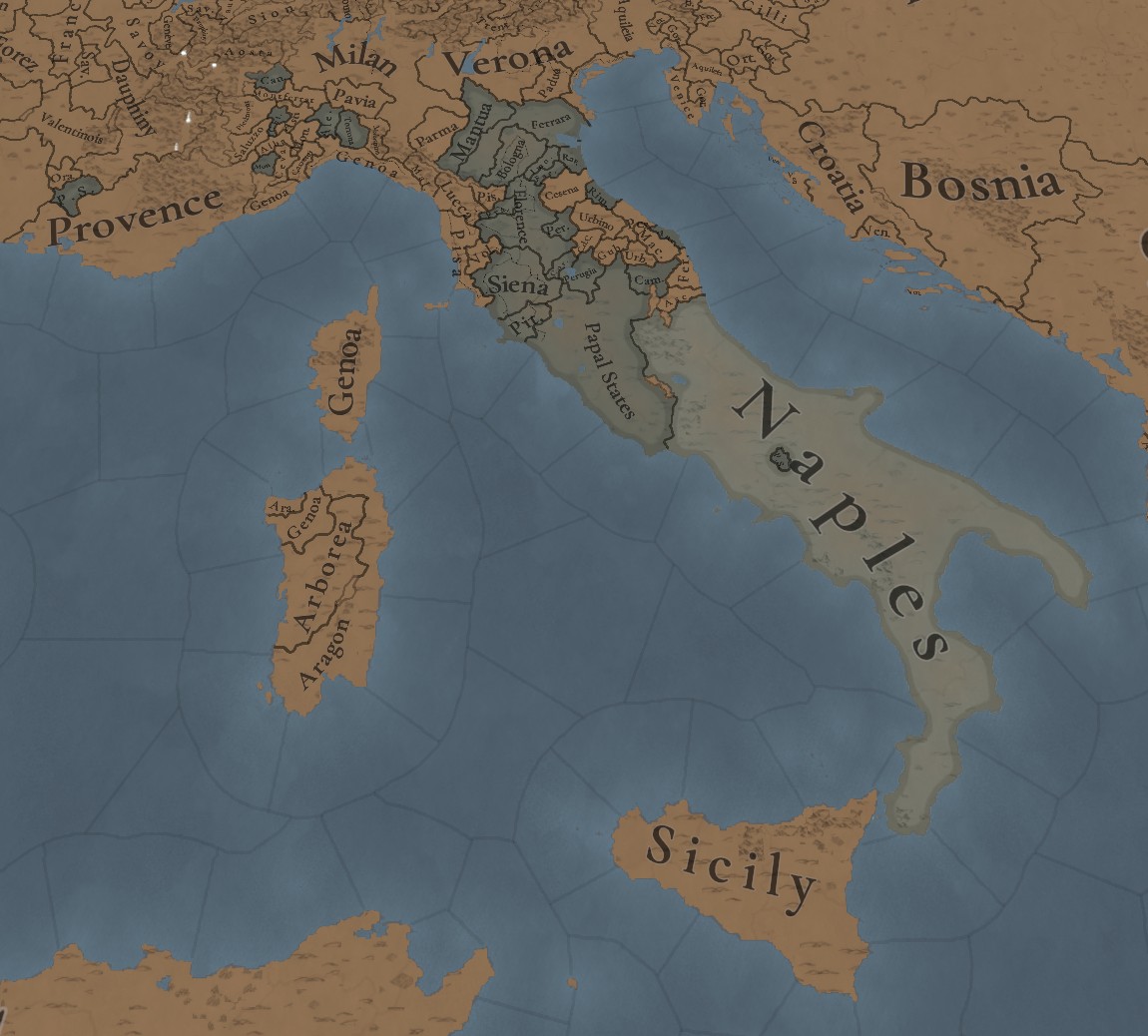

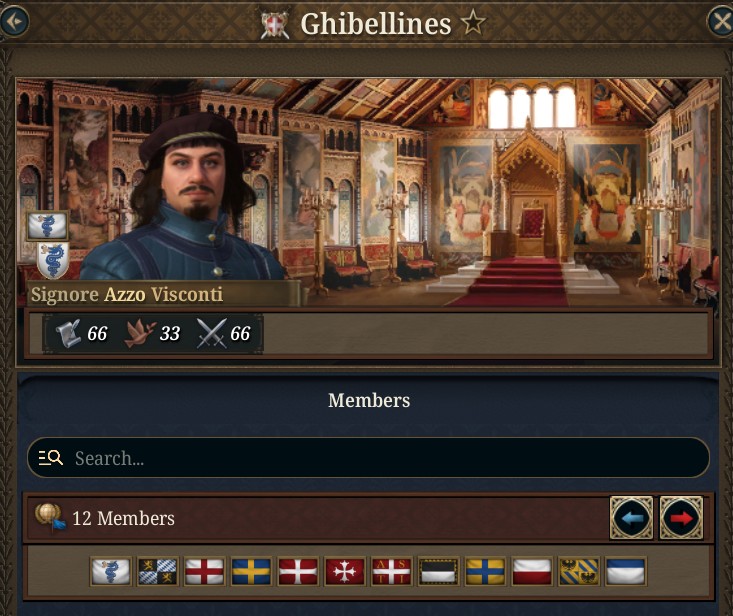
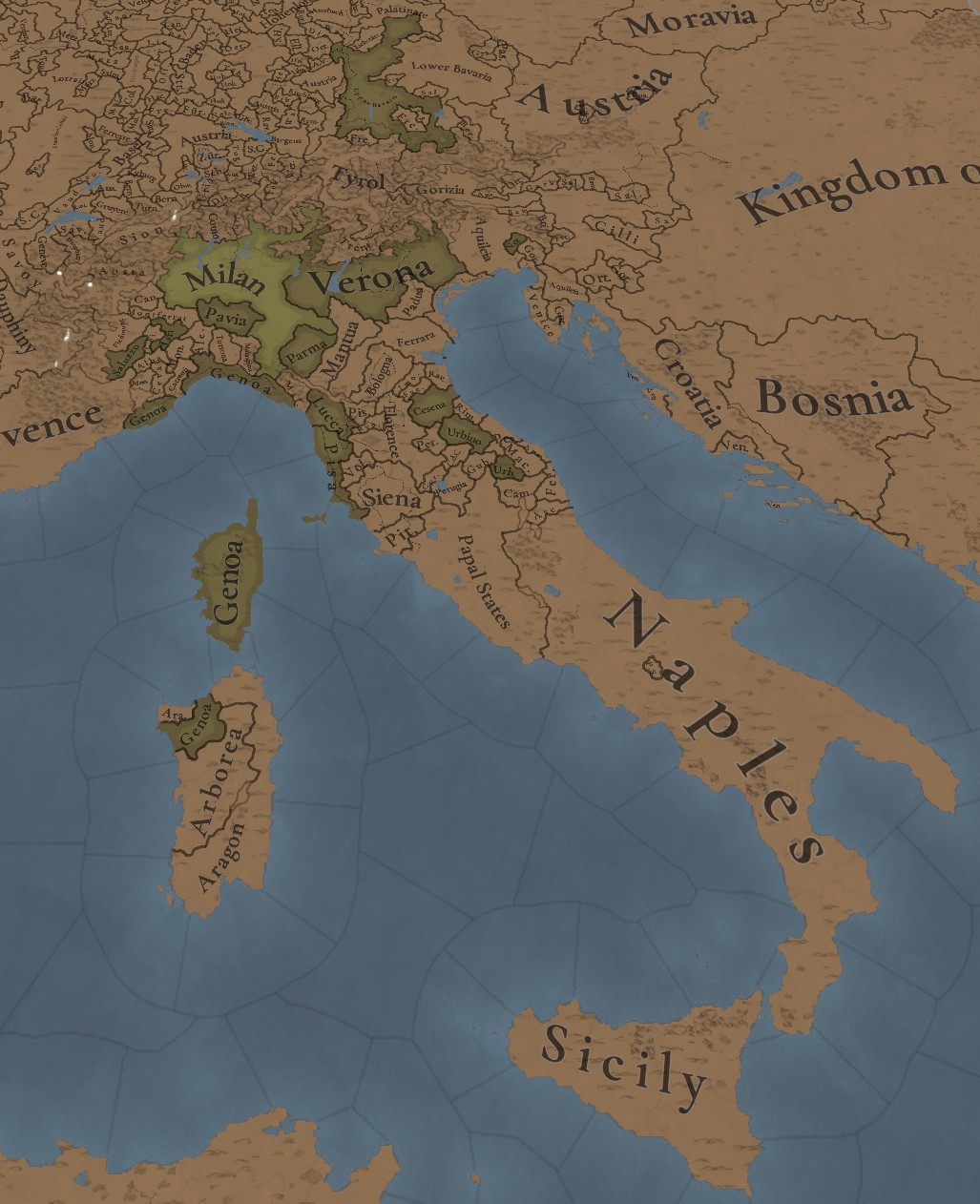
As you can see, Italy starts already divided into these two factions, Guelphs and Ghibellines, with their own leaders - Naples for the Guelphs, and Milan for the Ghibellines. Two months after the start of the game, you’ll get the event ‘The Political Landscape of Italy’, which starts the situation, and a few days later, this one that allows you to realign early on:
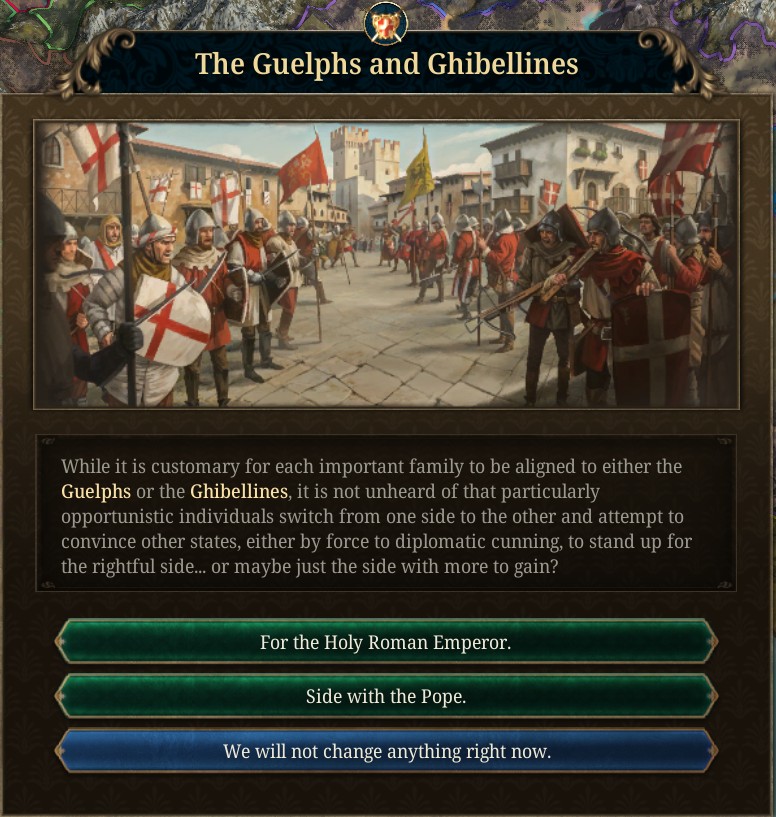
This is the situation itself, with a map of its starting factions if the player doesn’t change (as the AI will stay in their starting faction by default):
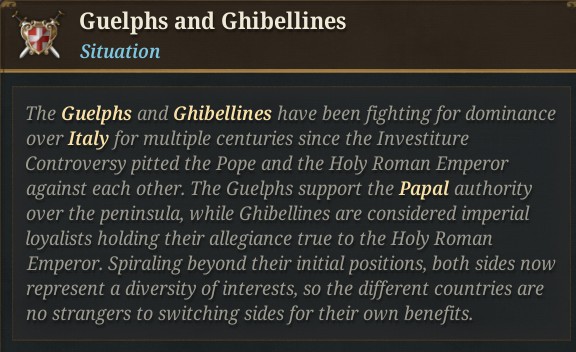
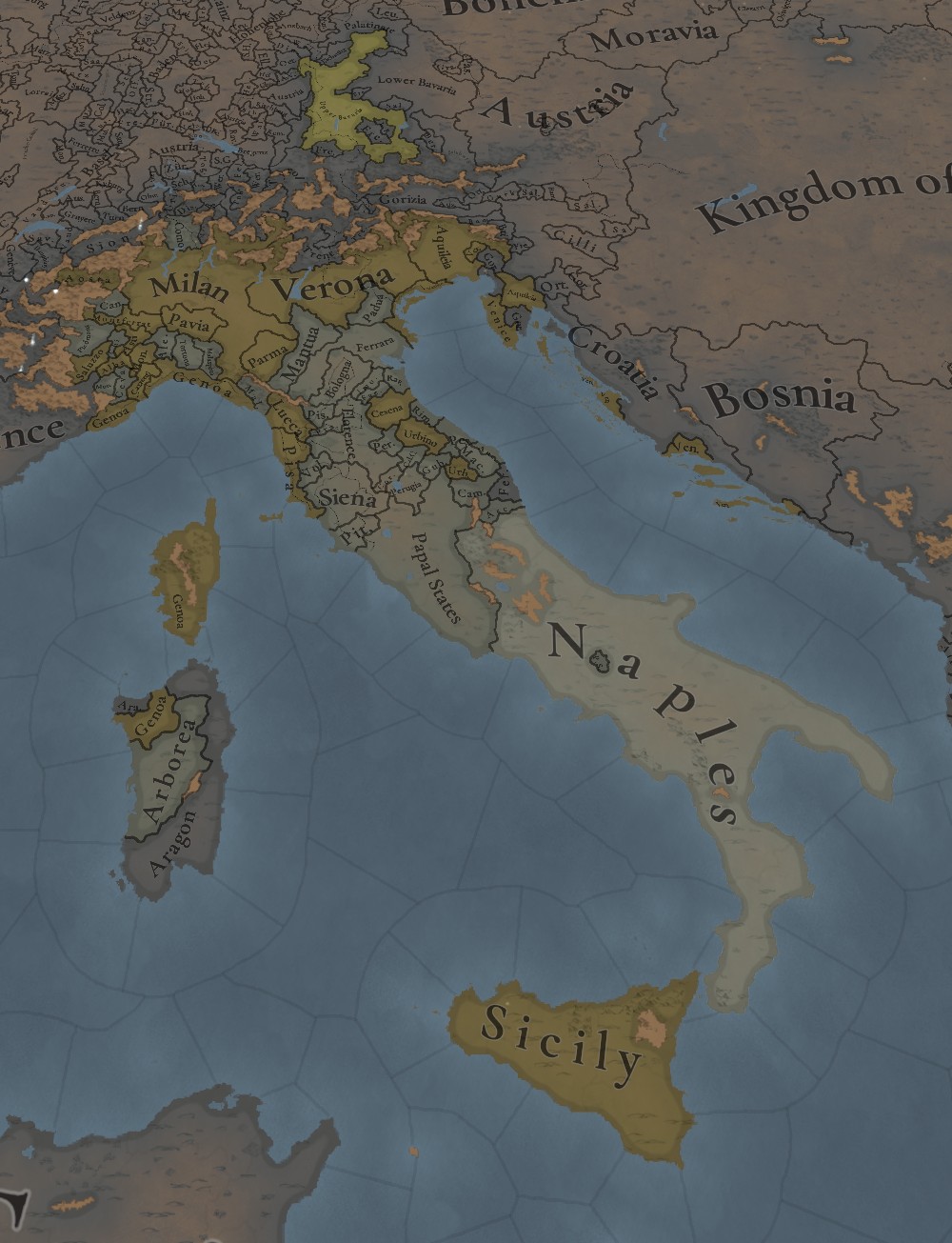
Note: Some tweaks regarding the coloring still need to be done.
The situation revolves around diplomacy - each faction will try to get as many Italian countries to join its faction, either by peace or by war:
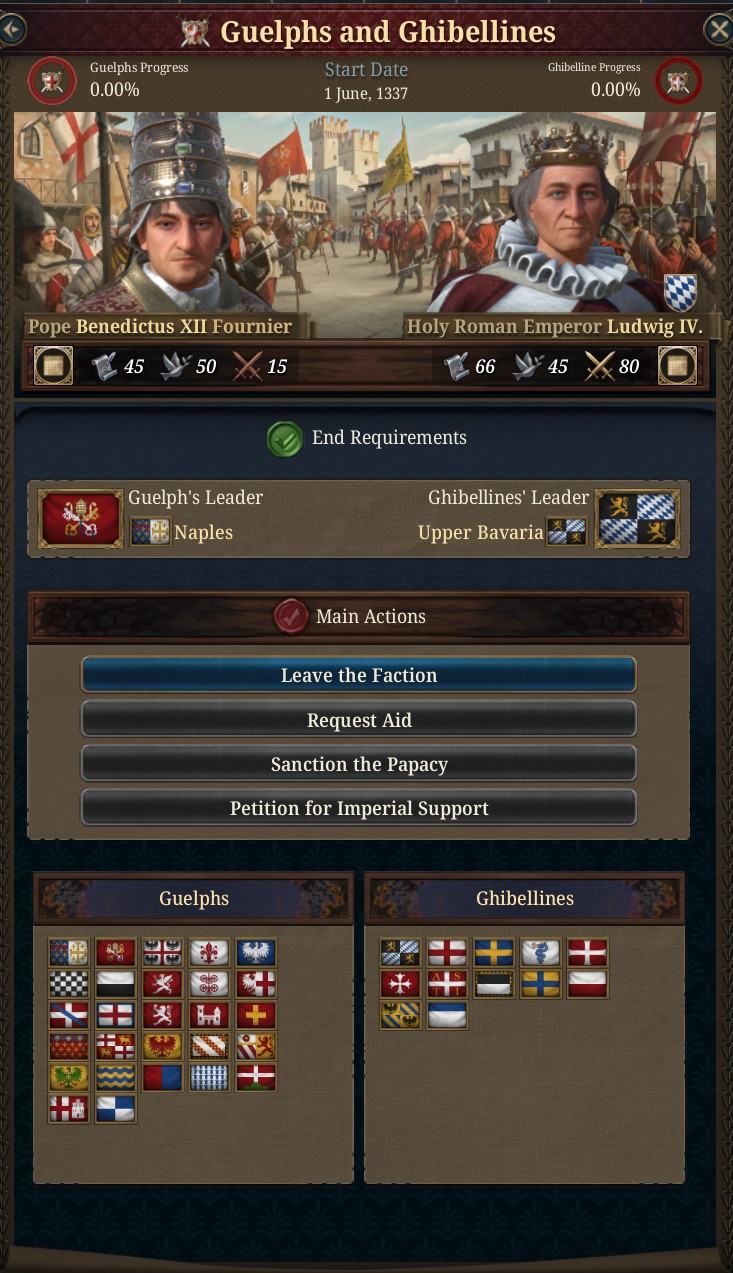

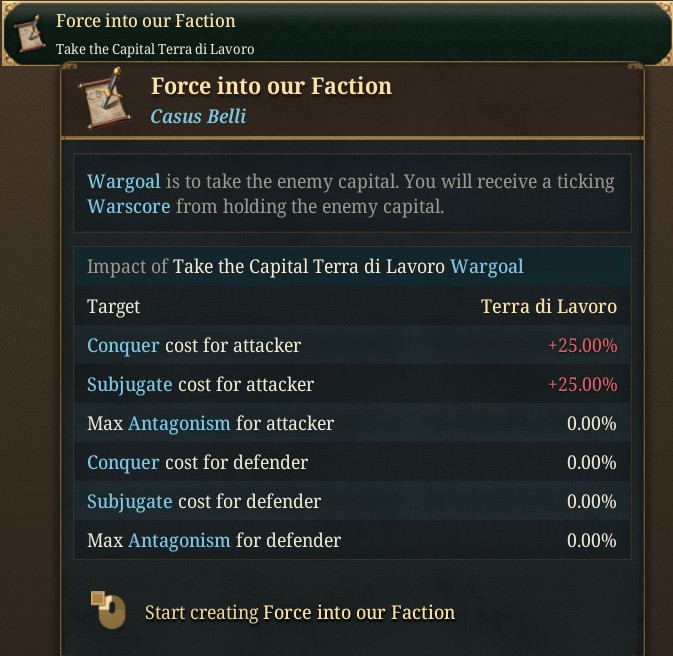
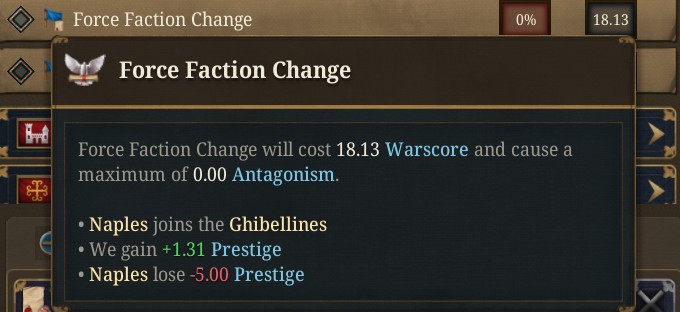
As you may have seen in the panel, some actions can be performed, which are slightly different depending on which faction you belong to:
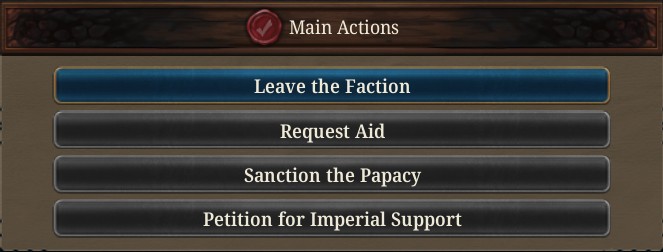
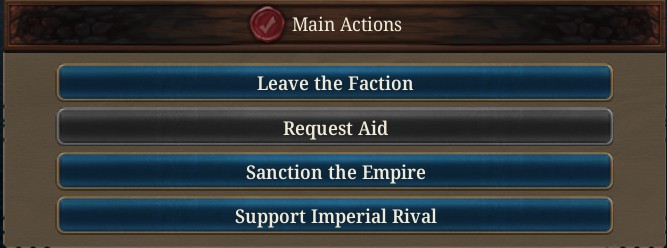
To end the situation, you need to have 100% Progress achieved for your faction. If the Age of Discovery starts (in 1437) without one of the factions having won over the other, a stalemate will happen:
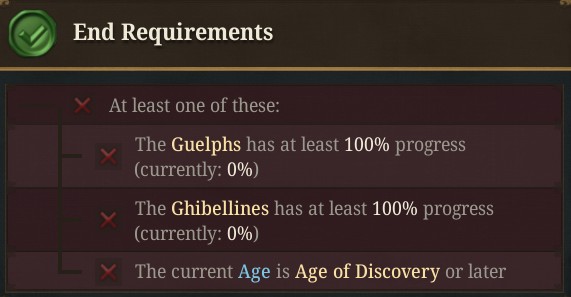

There are 3 different outcomes for the situation:

This is an example of the ending event for the ‘Stalemate Outcome’.
The Italian Wars is a situation that may be triggered if the Holy Roman Emperor, or a French or Iberian foreign power (which is defined here by either being a Great Power in game terms, being of Kingdom rank, or having at least 5M pops) attacks a country in the Italian region after the Age of Discovery has started:
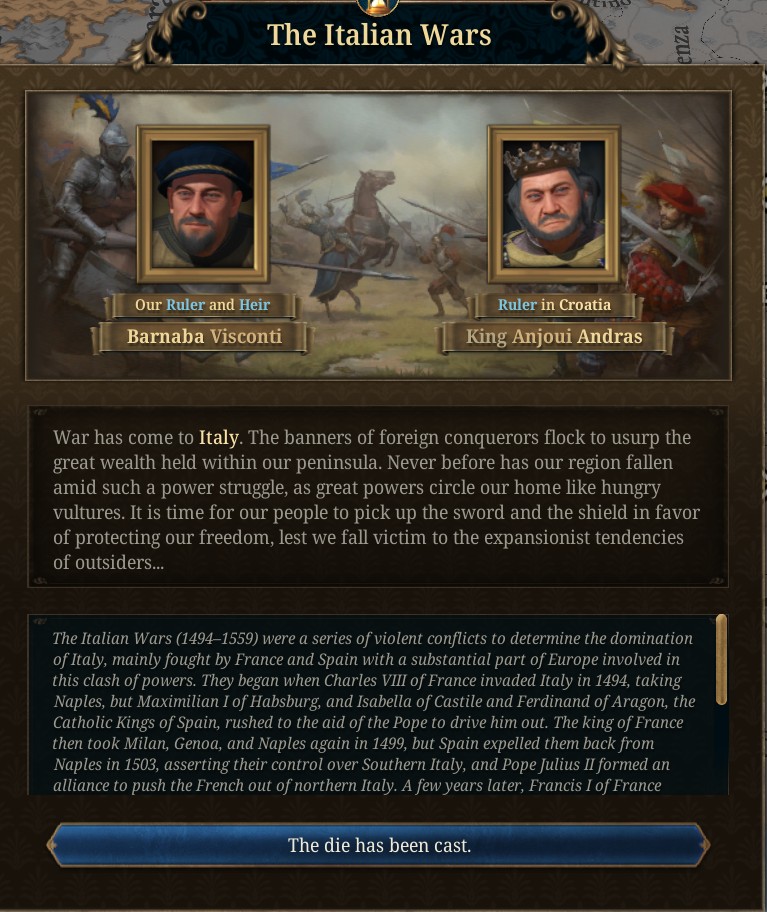
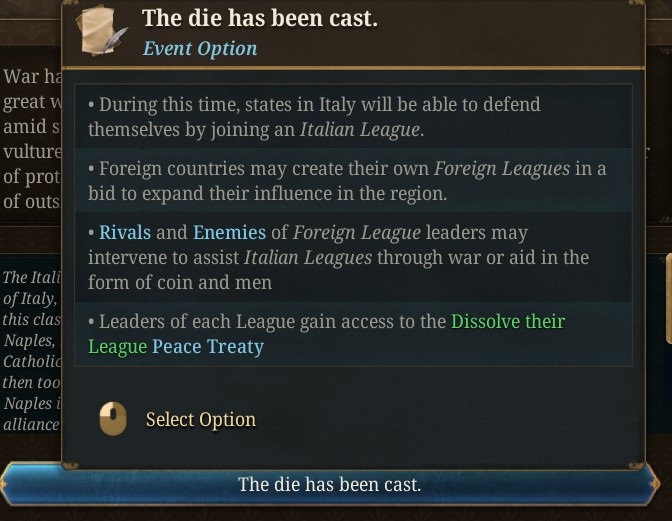
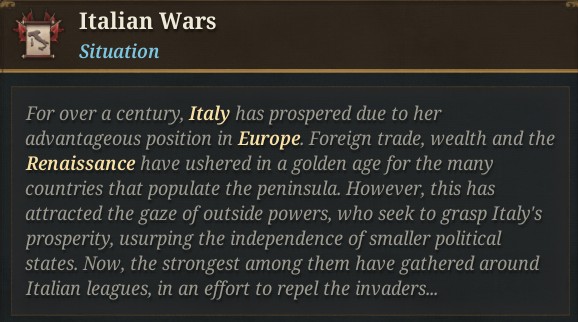
As you can see, three Foreign Leagues, one centered around each region (HRE, France, and Iberia), will be formed, while three Italian Leagues will also be formed. The chosen countries are those regarded as more powerful in each region:

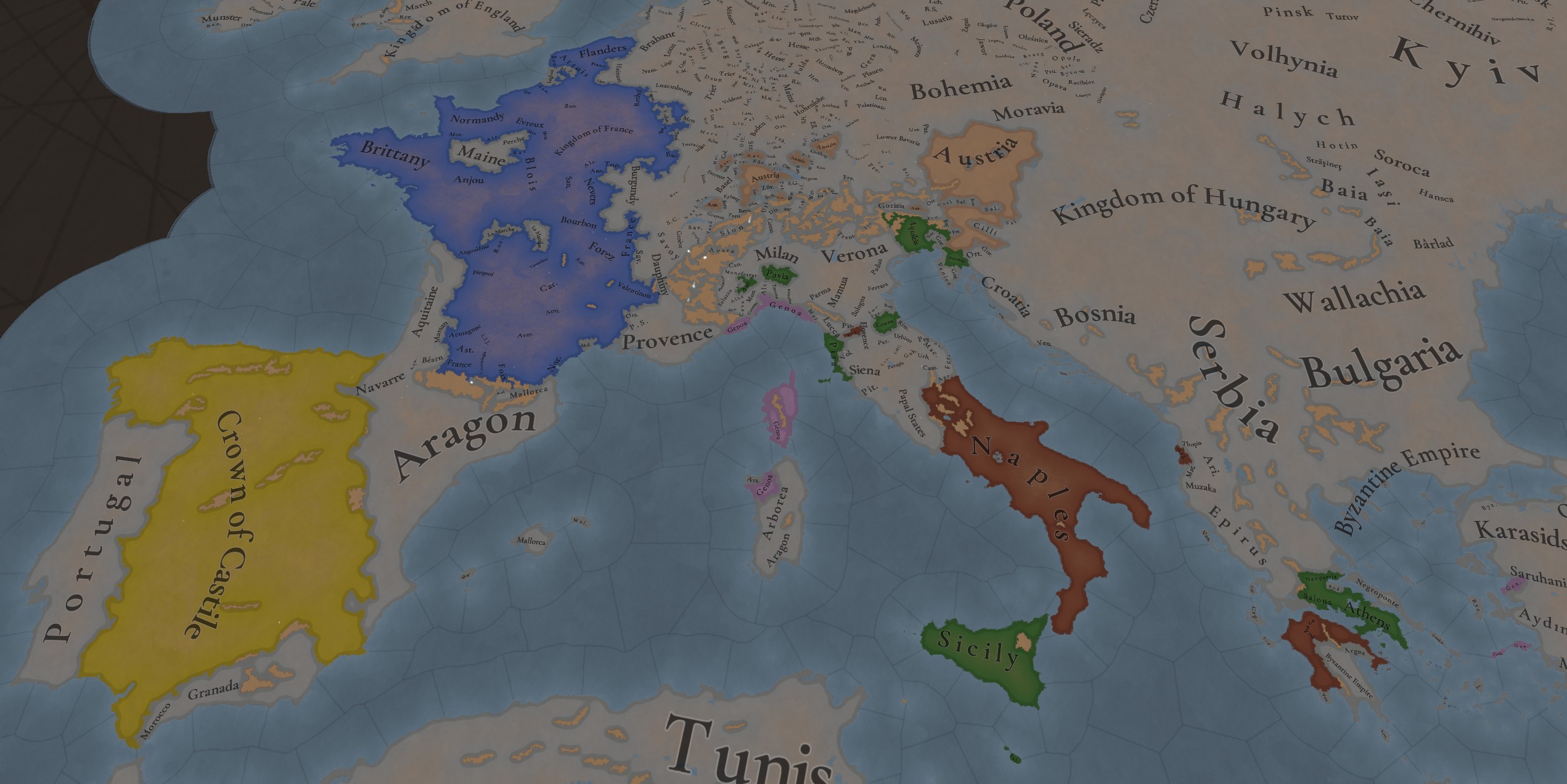
Note: I forced the situation through console commands, so the RNG gifted us with a regent in France, and the main countries chosen as League Leaders were quite similar to those more powerful in 1337.
As you can see, there’s also a mix of diplomacy and war that can be conducted to ‘attract’ other countries into your sphere - you can either do diplomatic actions to invite them, or you can conquer them through force to incorporate them into your League.
The situation can end either if any League controls or has the support of at least 200 locations in Italy, or if 50 years after the start of the Italian Wars, the Foreign Leagues don’t have any locations in Italy.
The results may be the following:

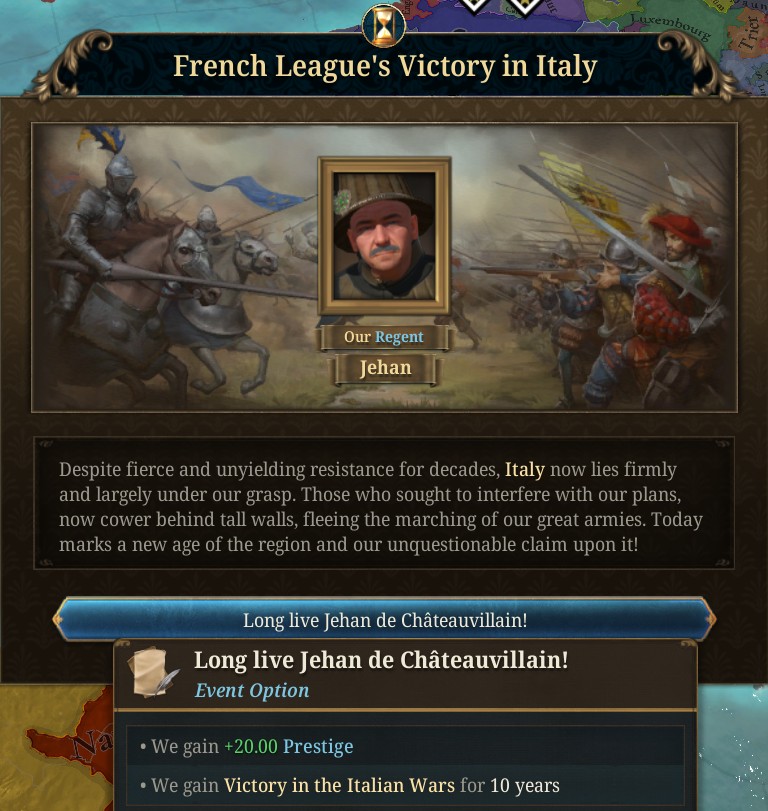
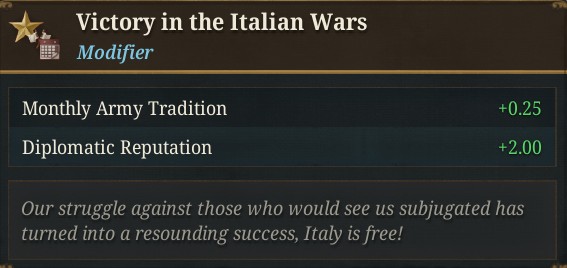
And that’s all for today! We will come back on Friday, as we will talk in Tinto Flavour, about two Italian countries, Milan and Naples.
And also remember, you can wishlist Europa Universalis V now! Cheers!
Today we will talk about two situations that impact Italy in the first 200 years of the game: the Guelphs & Ghibellines and The Italian Wars. They’re kind of related, but independent in how they play. Let’s start without further ado:
Guelphs & Ghibellines
Some of you may remember the ‘Shadow Empire’ incident of EU4, where the Emperor ‘races’ to keep the Italian countries inside the HRE. However, one century earlier, the political landscape of Italy was more complex in that regard, as two main political factions had been fighting for around 200 years: the Guelphs, defenders of the Pope, and the Ghibellines, supporters of the Imperial power.







As you can see, Italy starts already divided into these two factions, Guelphs and Ghibellines, with their own leaders - Naples for the Guelphs, and Milan for the Ghibellines. Two months after the start of the game, you’ll get the event ‘The Political Landscape of Italy’, which starts the situation, and a few days later, this one that allows you to realign early on:

This is the situation itself, with a map of its starting factions if the player doesn’t change (as the AI will stay in their starting faction by default):


Note: Some tweaks regarding the coloring still need to be done.
The situation revolves around diplomacy - each faction will try to get as many Italian countries to join its faction, either by peace or by war:




As you may have seen in the panel, some actions can be performed, which are slightly different depending on which faction you belong to:


To end the situation, you need to have 100% Progress achieved for your faction. If the Age of Discovery starts (in 1437) without one of the factions having won over the other, a stalemate will happen:


There are 3 different outcomes for the situation:
- If the Guelphs win, all countries with a capital in the Italy region will be forced to leave the HRE
- If the Ghibellines win, all countries, except Naples, Sicily, the Papal States, or the Two Sicilies, will be forced to join the HRE
- If neither side can achieve 100% Progress before the Age of Discovery starts, whoever is in the Guelphs will either stay out or leave the HRE, and whoever is in the Ghibellines will stay in the HRE.

This is an example of the ending event for the ‘Stalemate Outcome’.
The Italian Wars
The Italian Wars is a situation that may be triggered if the Holy Roman Emperor, or a French or Iberian foreign power (which is defined here by either being a Great Power in game terms, being of Kingdom rank, or having at least 5M pops) attacks a country in the Italian region after the Age of Discovery has started:



As you can see, three Foreign Leagues, one centered around each region (HRE, France, and Iberia), will be formed, while three Italian Leagues will also be formed. The chosen countries are those regarded as more powerful in each region:


Note: I forced the situation through console commands, so the RNG gifted us with a regent in France, and the main countries chosen as League Leaders were quite similar to those more powerful in 1337.
As you can see, there’s also a mix of diplomacy and war that can be conducted to ‘attract’ other countries into your sphere - you can either do diplomatic actions to invite them, or you can conquer them through force to incorporate them into your League.
The situation can end either if any League controls or has the support of at least 200 locations in Italy, or if 50 years after the start of the Italian Wars, the Foreign Leagues don’t have any locations in Italy.
The results may be the following:



And that’s all for today! We will come back on Friday, as we will talk in Tinto Flavour, about two Italian countries, Milan and Naples.
And also remember, you can wishlist Europa Universalis V now! Cheers!




